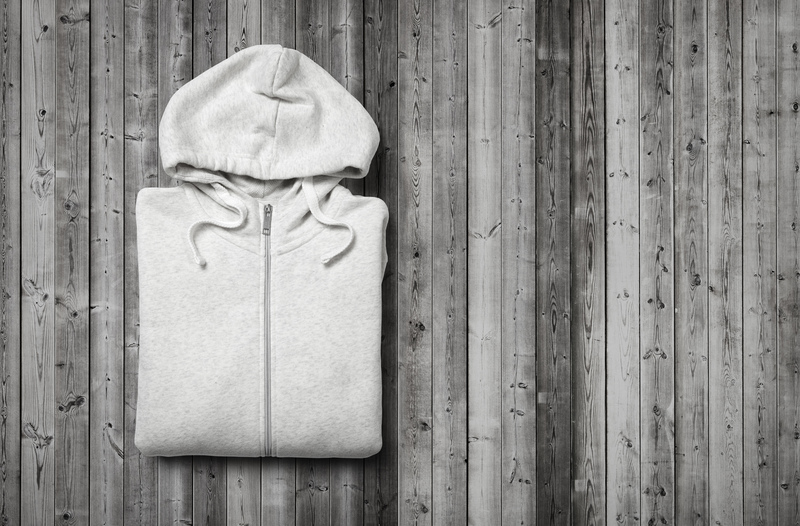Discover the Hidden Dangers: Plastics You Should Sidestep
In our everyday lives, plastics are everywhere--from food packaging and household goods to electronics and children's toys. While plastics offer convenience and affordability, not all plastics are created equal. Some types pose hidden risks to our health and to the environment. In this comprehensive guide, you will learn which plastics you should avoid, why they are hazardous, and how to make safer choices for you and your family.

Understanding the World of Plastics
Plastics are synthetic materials made from a wide variety of organic polymers such as polyethylene, PVC, nylon, and others. They are lightweight, durable, and cheap to produce. However, the chemical additives and polymers in some plastics can contain toxic substances that leach into food, water, or the environment.
It is critically important to be informed about the types of plastics you encounter daily, and to understand which plastics contain potentially harmful ingredients. Let's break down how to identify these plastics and why plastic avoidance is recommended in certain cases.
Plastic Identification Codes: What Do They Mean?
Products made with plastics often have a numbered recycling symbol, usually found on the bottom. Each number represents a different type of plastic and its chemical composition:
- 1 - PET (Polyethylene Terephthalate): Common in water and soft drink bottles.
- 2 - HDPE (High-Density Polyethylene): Used for milk jugs, cleaning product bottles.
- 3 - PVC (Polyvinyl Chloride): Found in shower curtains, pipes, cling wrap.
- 4 - LDPE (Low-Density Polyethylene): Used in bread bags, frozen food bags.
- 5 - PP (Polypropylene): Yogurt containers, reusable food containers.
- 6 - PS (Polystyrene): Disposable cups, plates, takeout utensils.
- 7 - Other: Includes polycarbonates and other uncommon plastics.
Not all plastics are equally hazardous, but some raise substantial concerns for human health, especially when they come into contact with food or drinks.
Top Plastics to Avoid: Hidden Dangers You Need To Know
Let's dive into the plastics you should sidestep, the risks they pose, and healthier alternatives.
1. Polyvinyl Chloride (PVC) - Plastic #3
Also known as vinyl, PVC is widely used in pipes, toys, shower curtains, and packaging. However, PVC is known for its potential to release dangerous chemicals such as phthalates, lead, and other additives throughout its lifecycle.
- Health Risks: PVC contains phthalates, which are plasticizers added to increase flexibility. Phthalates have been linked to hormone disruption, developmental issues in children, reproductive problems, and even cancer.
- Environmental Impact: The production and disposal of PVC generate toxic chemicals, which can contaminate air, water, and soil.
- Avoidance Tips: Steer clear of products marked with #3. Seek alternatives like glass, paper, or plastics labeled #1, #2, or #5.
2. Polystyrene (PS or Styrofoam) - Plastic #6
Styrofoam might make your coffee cup lightweight, but polystyrene poses grave dangers to human health and the ecosystem.
- Health Risks: Styrene, a major building block of PS, is classified as a possible human carcinogen. Leaching of styrene increases with heat, acidity, or when in contact with fatty foods.
- Environmental Impact: Polystyrene does not biodegrade, persisting in the environment for centuries and easily breaking into microplastics that pollute waterways and harm wildlife.
- Avoidance Tips: Opt for reusable or biodegradable alternatives to foam takeout containers and cups.
3. Polycarbonate and Other Plastics - Plastic #7
The #7 symbol is a catch-all for "other" plastics, including polycarbonate, which is often used in water coolers, baby bottles, and sports bottles. Many #7 plastics contain BPA (Bisphenol A), a synthetic estrogen and hormone disruptor.
- Health Risks: BPA exposure has been associated with numerous health issues, including heart disease, diabetes, brain and behavioral problems in children, and reproductive system effects.
- Environmental Impact: BPA and related compounds can leach into groundwater, affecting wildlife and natural ecosystems.
- Avoidance Tips: Avoid plastics labeled #7, especially when used for food or drink. Choose BPA-free products and prefer stainless steel or glass when possible.
4. Recycled Plastics: Proceed with Caution
While recycling is a vital effort, recycled plastics can sometimes contain unknown contaminants, especially when resin codes are ambiguous or mixed.
- Health Risks: Contaminated recycled plastics may introduce toxic chemicals or microplastics.
- Avoidance Tips: Use recycled plastics for non-food-contact use only. For food storage or baby products, stick to high-quality, single-resin plastics or non-plastic options.
The Ripple Effect: How These Plastics Harm Our Planet
The hazards of dangerous plastics go beyond personal health. Their impact extends to the environment and wildlife:
- Pollution: Plastics like PVC and polystyrene are difficult to recycle and often end up in landfills or oceans, where they persist for hundreds to thousands of years.
- Microplastics: As plastics break down, they form tiny particles that contaminate soil, waterways, and the food chain, threatening aquatic life and eventually making their way into our own bodies.
- Toxic Release: Production and incineration of some plastics release carcinogenic chemicals, such as dioxins from PVC, posing risks to communities and ecosystems.
Alternatives to Hazardous Plastics: Healthier & Greener Choices
Sidestepping hazardous plastics doesn't mean sacrificing convenience or modern comforts. Today, there are numerous safer alternatives:
- Switch to glass or stainless steel containers: They are durable, reusable, and free from harmful chemicals.
- Choose plastics with codes #1, #2, or #5: These are considered safer for food or beverage storage and are more widely recyclable.
- Opt for plant-based materials: New compostable materials made from cornstarch or bamboo provide green alternatives for single-use items.
- Use food wraps and bags made from beeswax or silicone: These are reusable, non-toxic substitutes for cling wraps and sandwich bags.
Safe Plastics for Food Contact
When using plastic for food or drink, choose from the safer resins:
- #1 (PET or PETE): Best for single-use cold drinks. Avoid reusing, as these can degrade.
- #2 (HDPE): Good for milk, juices, and certain food containers. Highly resistant to leaching.
- #5 (Polypropylene): Microwave-safe, commonly used for food storage and baby bottles.
Practical Tips to Reduce Your Exposure to Dangerous Plastics
Protecting yourself and your family from harmful plastics begins with informed choices. Here are actionable steps you can take today:
- Check product labels: Look for the resin identification code and avoid #3, #6, and #7 for food contact.
- Avoid heating food in plastic containers: Heat increases the rate at which chemicals leach into food. Use glass or ceramic in microwaves.
- Keep plastics out of the dishwasher: High temperatures and abrasive detergents degrade plastic, increasing chemical migration.
- Select toys and baby products wisely: Avoid PVC-based teethers and toys. Look for products marked "BPA-free" and free from phthalates.
- Say no to single-use plastics: Refuse plastic straws, cutlery, and bags whenever possible.
- Store food safely: Transfer leftovers to glass or stainless steel rather than keeping them in takeout containers.

Why It Matters: Taking Steps for Health and Sustainability
The threat posed by problematic plastics is real--both to human health and our delicate planet. By avoiding the most dangerous plastics and opting for safer alternatives, you safeguard your well-being and help reduce pollution for future generations.
Whether you are a concerned parent, an eco-conscious individual, or someone striving for a healthier lifestyle, understanding the hidden dangers of plastics empowers you to make better choices every day.
Frequently Asked Questions - Plastics You Should Sidestep
-
What is BPA, and why should I avoid it?
BPA (Bisphenol A) is a chemical used in the production of certain plastics and resins. It can leach into food and beverages and has been linked to developmental, reproductive, and metabolic problems. -
Are all "BPA-free" plastics safe?
Not always. BPA-free plastics sometimes substitute BPA with similar chemicals like BPS or BPF, which may pose comparable health risks. It's best to use non-plastic alternatives when possible. -
What should I do with hazardous plastic products?
If disposal is needed, recycle according to local guidelines to minimize environmental harm or join a plastic takeback program. -
How can I tell if a product is made from harmful plastic?
Check for the recycling code, review manufacturer information, and research the product before purchasing.
Conclusion: Make Informed Choices and Protect Your Future
Avoiding the hidden dangers of plastics doesn't have to be overwhelming. By learning how to identify and sidestep plastics like PVC, polystyrene, and polycarbonates, you can make small changes that yield big benefits for your health and for the environment. Spread awareness, adopt safer alternatives, and become part of the global movement for a safer, cleaner future!
Start today--choose wisely, live healthily, and help unmask the dangers hiding in everyday plastics.